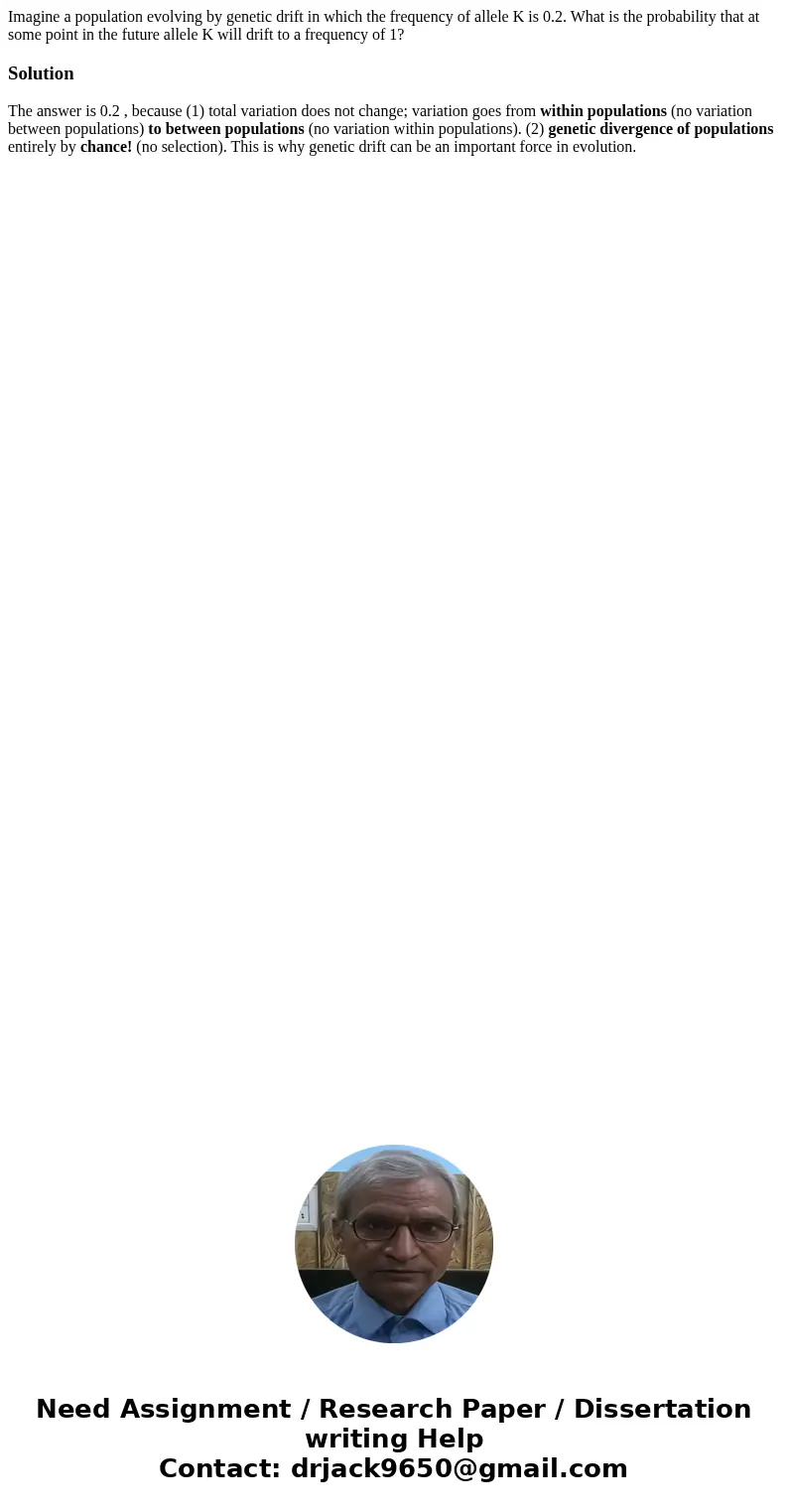Imagine a population evolving by genetic drift in which the
Imagine a population evolving by genetic drift in which the frequency of allele K is 0.2. What is the probability that at some point in the future allele K will drift to a frequency of 1?
Solution
The answer is 0.2 , because (1) total variation does not change; variation goes from within populations (no variation between populations) to between populations (no variation within populations). (2) genetic divergence of populations entirely by chance! (no selection). This is why genetic drift can be an important force in evolution.

 Homework Sourse
Homework Sourse